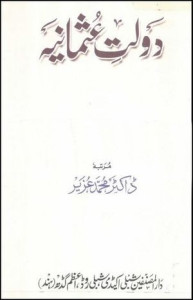Dolat e Osmani PDF Free Book Download
The Ottoman Empire was one of the mightiest and longest-enduring administrations in world history. This Islamic-run superpower governed huge zones of the Middle East, Eastern Europe and North Africa for over 600 years. The main chief, known as the Sultan, was given total strict and political authority over his kin.
Ascent of the Ottoman Empire
By 1517, Bayezid’s child, Selim I, brought Syria, Arabia, Palestine, and Egypt under Ottoman control.
The Ottoman Empire arrived at its top somewhere in the range of 1520 and 1566, during the rule of Suleiman the Magnificent. This period was set apart by extraordinary influence, strength and riches.
Suleiman made a uniform arrangement of law and invited various types of expressions and writing. Numerous Muslims considered Suleiman a strict pioneer just as a political ruler.
All through Sultan Suleiman’s standard, the domain extended and included zones of Eastern Europe.
Footstool Art and Science
Download PDF FreeBook
Do You want to read Dolat e Osmania Book in PDF form so you are in the right place from here you can download free PDF Book to read. You need to just click on Download Button below to download Free PDF Book.
The Ottomans were known for their accomplishments in workmanship, science and medication. Istanbul and other significant urban communities all through the realm were perceived as aesthetic center points, particularly during the rule of Suleiman the Magnificent.
Probably the most mainstream types of craftsmanship included calligraphy, painting, verse, materials and floor covering weaving, earthenware production and music.
Footrest engineering additionally characterized the way of life of the time. Expound mosques and open structures were built during this period.
Science was viewed as a significant field of study. The Ottomans learned and rehearsed propelled science, space science, theory, material science, topography and science.
Furthermore, probably the best advances in medication were made by the Ottomans. They concocted a few careful instruments that are as yet utilized today, for example, forceps, catheters, surgical blades, pliers and lancets.
